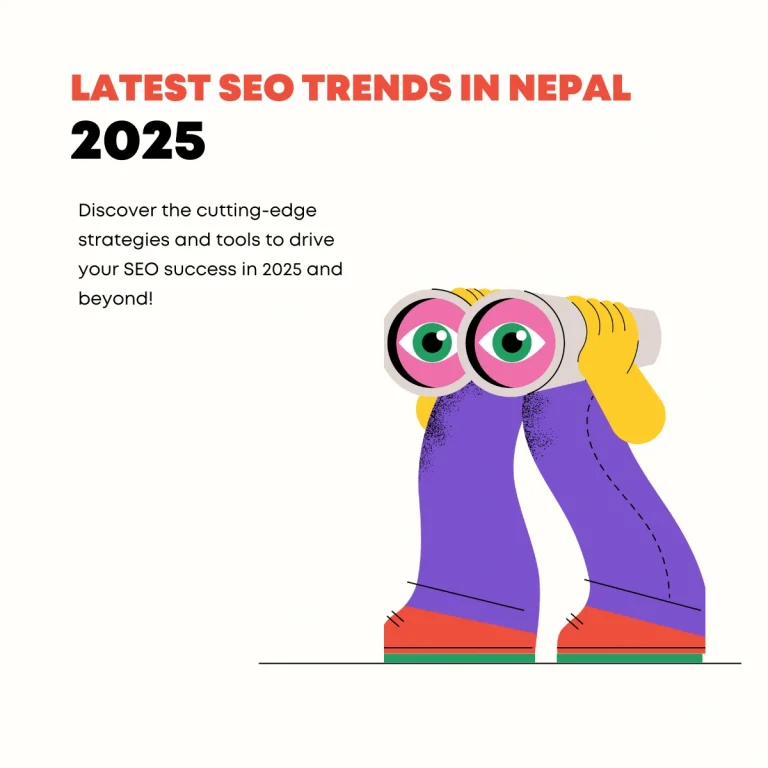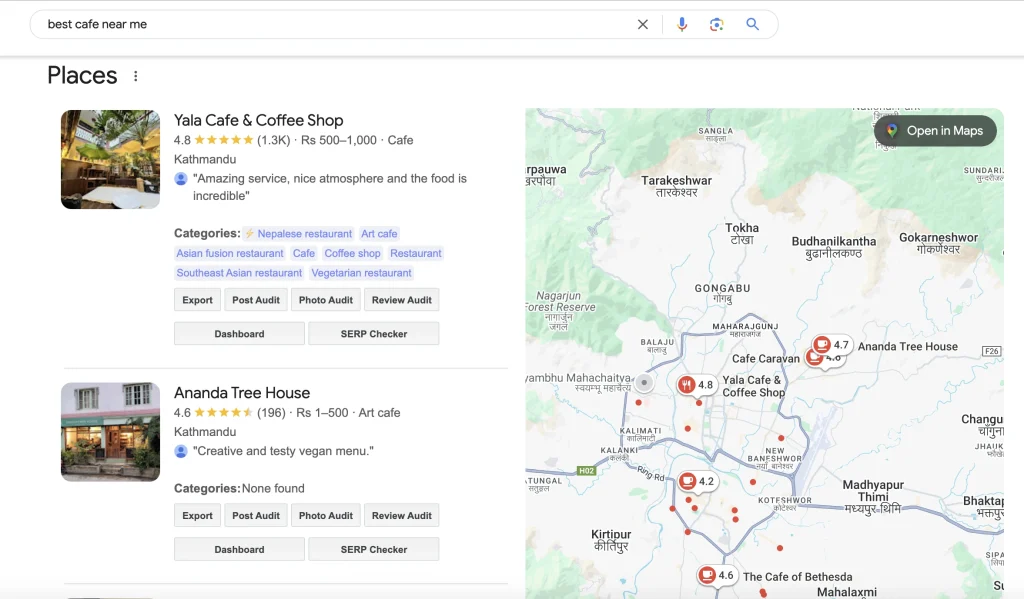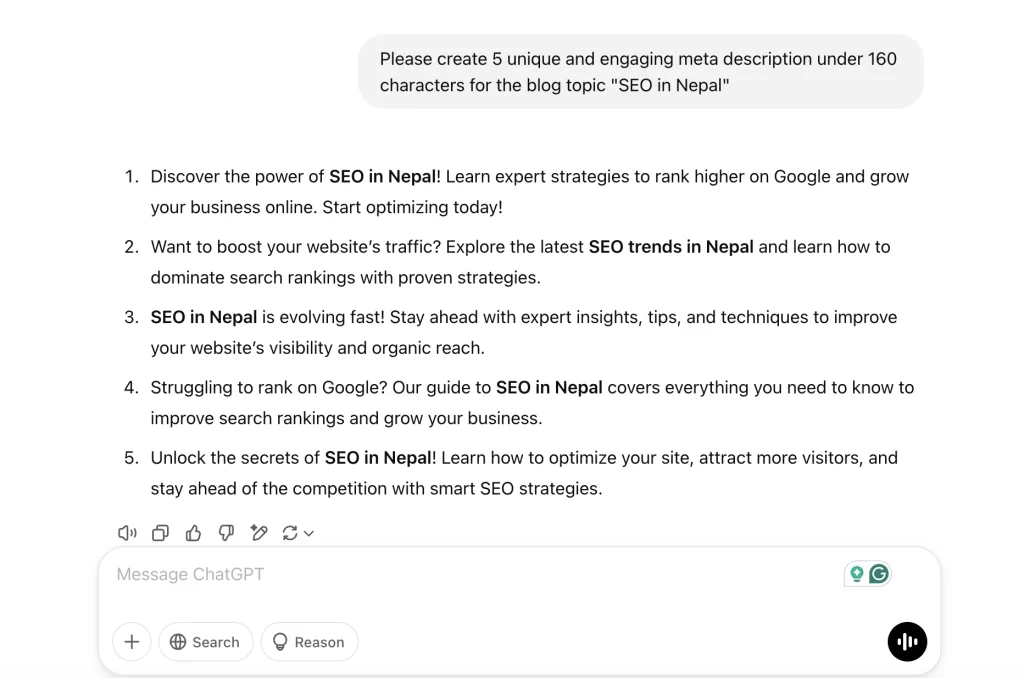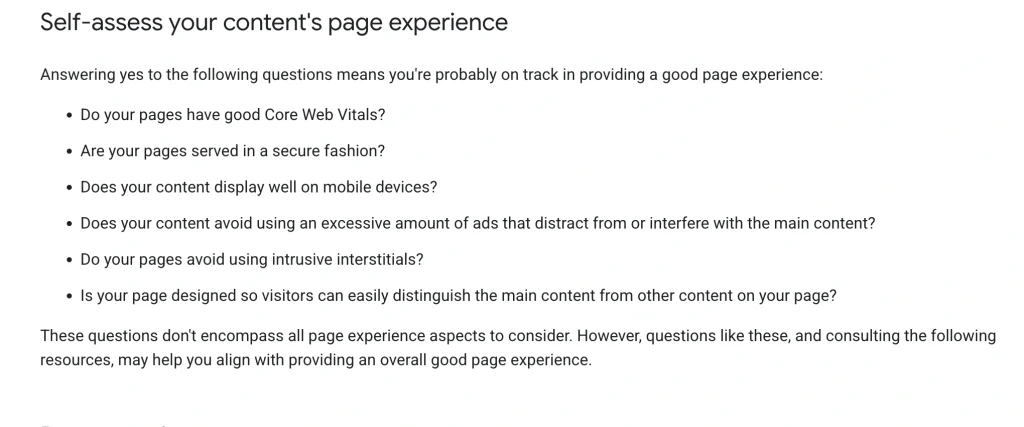Latest SEO Trends of 2025 in Nepal
Table of Contents
Toggle
Wondering what’s next for SEO trends in Nepal? By 2025, the digital landscape in Nepal is set to change big time. With more people going online, businesses are racing to get noticed, and SEO is their secret weapon.
From Google’s AI-driven updates to the growing importance of local search and mobile-first strategies, businesses can’t afford to stick to old tactics.Let’s dive into what’s shaping the future of SEO in Nepal and how you can make it work for you.
If you’re trying to rank higher, get more traffic, or just keep up with what actually works right now, understanding the latest SEO trends is crucial. In this blog, we’ll break down what’s new in the Nepalese SEO scene this year—and how you can use these changes to your advantage.
9 Latest Trends of SEO in 2025
1. User Search Intent
Understanding what users are looking for when they type queries into search engines has become crucial in 2025. Just stuffing the keywords won’t rank your content. Now, search engines are incredibly smart at figuring out what users want.
Google is focused on improving the delivery of search results that satisfy intent, whether someone wants to buy, learn, compare, or just look around.
Nepalese businesses that align their content with user intent see significantly better engagement rates. For example, if someone searches for “best momo restaurants in Thamel,” they likely want to see a list of restaurants with ratings and reviews, not an article explaining what momos are.
There are four different types of user search intent.
- Informational (wanting to learn something)
- Navigational (looking for a specific website)
- Commercial (researching before buying)
- Transactional (ready to purchase)
Matching content to intent can lower bounce rates while increasing conversions. It is simple but incredibly effective.
2. Voice Search Optimization
“Hey Google, where can I find the best hiking gear in Kathmandu?”
Voice searches are increasing in Nepal, particularly with the growing smartphone adoption rate and improving Nepali language recognition technology.
The way people speak differs vastly from how they type, creating new optimization challenges.
Voice searches tend to be:
- Longer (usually 7+ words)
- Question-based (who, what, where, when, why, how)
- Conversational in tone
- Often locally focused
To optimize for voice search in Nepal, focus on natural language patterns and question-based content. Creating FAQ sections that answer common questions can dramatically boost your visibility in voice search results.
As of early 2025, Nepal had around 39 million active mobile connections, which is about 132% of the country’s total population. (Source: Datareportal).
Optimizing For Local SEO
Local SEO is no longer optional if you run a business in Nepal. It helps your business appear when people nearby search for your products or services.
In Nepal, where many customers rely on Google to find local shops, restaurants, or service providers, showing up in those search results can bring real, paying customers to your door.
When people search for something nearby, Google shows them businesses closest to their location.
Key tactics for local SEO dominance in Nepal include:
- Claiming and optimizing your Google Business Profile.
- Gathering genuine customer reviews.
- Creating location-specific pages.
- Building local citations on Nepal-specific directories.
- Including location-based keywords in your content.
It’s one of the simplest ways to attract local traffic, get more calls, and grow your brand within your community.

3. Use of AI in SEO
Artificial intelligence is transforming how content is created and ranked. Google’s AI systems now understand topics in-depth. They look beyond exact keywords. They analyze meaning, context, and even user behavior.
According to Semrush’s survey, 67% of businesses now use AI for SEO and content marketing tasks. Many Digital Marketing Agencies in Nepal have adopted AI tools to provide more value to their clients while reducing the time spent on repetitive tasks.
From content creation assistance to deep data analysis, artificial intelligence tools are helping professionals in many ways. Many SEO professionals use AI tools like ChatGPT, Perplexity, and Deepseek to perform keyword research, write titles, and create meta descriptions. These tools save time and help you stay competitive.

However, remember AI is a tool, not a replacement for human creativity. Use it to enhance your strategy, not replace it.
4. Video Content Optimization
Video content optimization is quickly becoming a powerful SEO strategy in 2025. With increasing YouTube and TikTok consumption in Nepal, optimizing for video content is crucial for SEO success. Videos improve user engagement, reduce bounce rates, and increase time on site, all of which are positive SEO signals.
Google often shows video results right at the top, making it essential to optimize. Hosting video contents on platforms like YouTube and embedding them on your site can boost rankings for both the video and the webpage.
Effective video content optimization include:
- Creating videos that answer specific questions
- Optimizing video titles, descriptions, and tags
- Adding transcripts and closed captions
- Creating video sitemaps
- Using schema markup for videos
5. Semantic SEO
Search engine algorithms are now better at understanding meaning and connections between topics. This is where Semantic SEO comes in. Semantic SEO focuses on the meaning behind words rather than the words themselves.
Semantic SEO helps content naturally cover related topics and questions. For example, if your blog is about digital marketing in Nepal, you should also touch on SEO, paid ads, content marketing, and analytics.
This involves:
- Building comprehensive topic clusters
- Using related terminology and concepts
- Creating in-depth, authoritative content
- Addressing related questions and concerns
- Providing context through internal linking
6. Mobile-First Indexing
Google prioritizes mobile-first indexing to rank websites based on their mobile versions. If a website is not mobile-friendly, it will struggle to rank well. Source (Google Search Central)
Nepal’s internet and mobile usage highlight why mobile optimization is essential in 2025. The below stats are taken from Datareportal;
- 15.40 million people in Nepal used the internet at the start of 2024, with an internet penetration rate of 49.6%.
- 37.47 million active mobile connections existed in early 2024, which is 120.6% of the total population (many people use multiple SIM cards).
To stay competitive, ensure your website has a responsive design, fast loading speed, and smooth navigation. Use tools like Google PageSpeed Insights to identify and fix performance issues.
7. The Growing Importance of E-E-A-T
E-E-A-T is more important than ever in 2025. E-E-A-T stands for Experience, Expertise, Authoritativeness, and Trust. Google loves content that demonstrates experience, expertise, authority, and trustworthiness (E-E-A-T). Search engines seek signals demonstrating a creator’s firsthand knowledge of a subject.
For instance, a blog about ‘Best SEO Practices in Nepal’ written by an SEO specialist in Nepal will rank higher than one with no expertise on SEO. Showcase your expertise through detailed guides, case studies, and testimonials.
To build trust, focus on creating high-quality, well-researched content. Include author bios, credentials, and links to authoritative sources.
8. Core Web Vitals and User Experience (UX)
Google has integrated Core Web Vitals into its ranking factors (Search Engine Journal). Core Web Vitals include Largest Contentful Paint (LCP), Interaction to Next Paint (INP), and Cumulative Layout Shift (CLS), which measures loading speed, responsiveness, and visual stability.
Websites that score poorly on these metrics risk losing ranking. You can use tools like PageSpeed Insight and GTmetrix to measure the metrics.
Search engines prioritize websites that offer a great user experience. A slow loading page frustrates users and Google penalizes that.

To improve user experience, optimize your site by using lightweight code, compress images, and employ faster hosting solutions. Focus on easy navigation and accessibility. A seamless UX ensures users stay longer and engage with the website, reducing bounce rates and signaling to search engines that your content is valuable.
9. Use of Structured Data
Implementing structured data markup helps search engines understand your content better and can result in rich snippets in search results.
There are different types of structured data that can be implemented based on the type of business. For example, adding schema for recipes, reviews, or FAQs can enhance your visibility in rich snippets. This means more clicks and traffic.
To get started, use tools like Google’s Structured Data Markup Helper to generate schema for your content. You’re missing out on a powerful SEO tool if you’re not using structured data.
10. Building a Brand
In 2025, SEO is no longer just about keywords, it’s also about trust. And trust comes from building a recognizable brand.
Google favors entities that people search for by name. That means if users are typing your brand name into search, you’re sending strong authority signals to Google.
Consistent branding across your website, social media, and content also improves user trust and engagement both key to better rankings.
Conclusion
By 2025, SEO in Nepal will be more dynamic and competitive than ever. Voice search, AI, video content, and local SEO will dominate the landscape. Businesses that adapt to these SEO trends will thrive, while those that don’t will fall behind.
The key is to stay updated, experiment, and focus on providing real value. Whether you’re a business owner, marketer, or aspiring SEO expert, the opportunities are endless. Start optimizing today and secure your spot in Nepal’s digital future.
